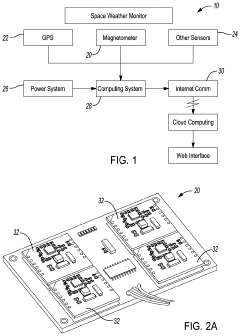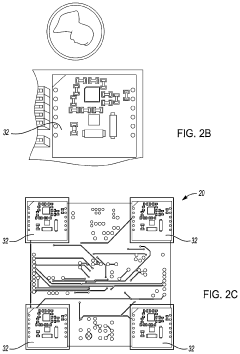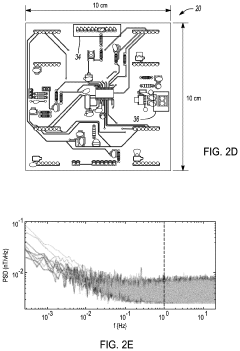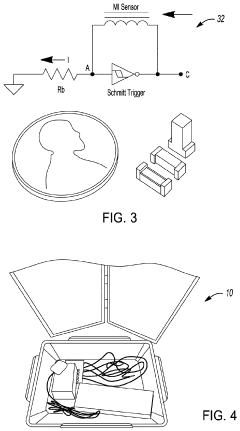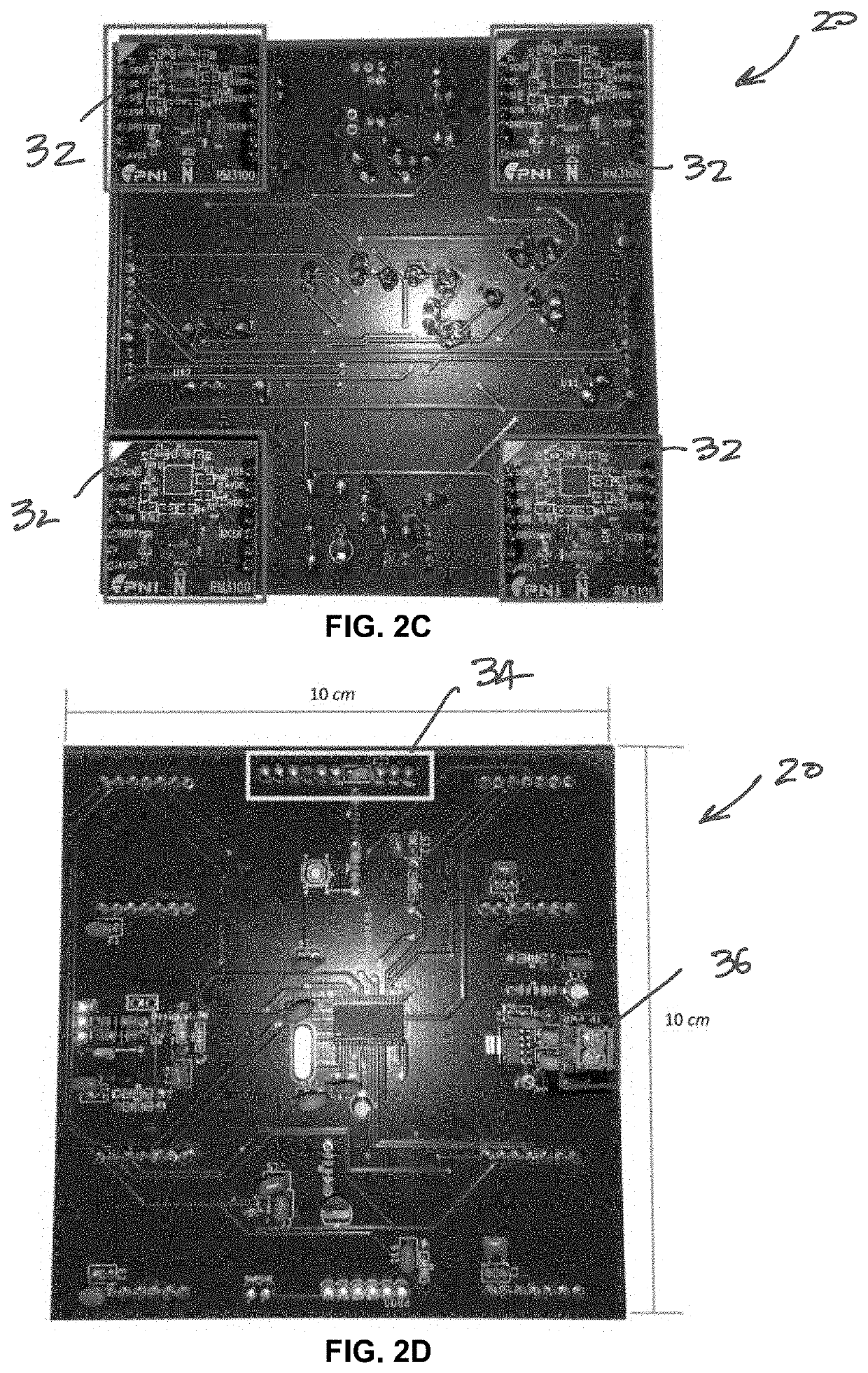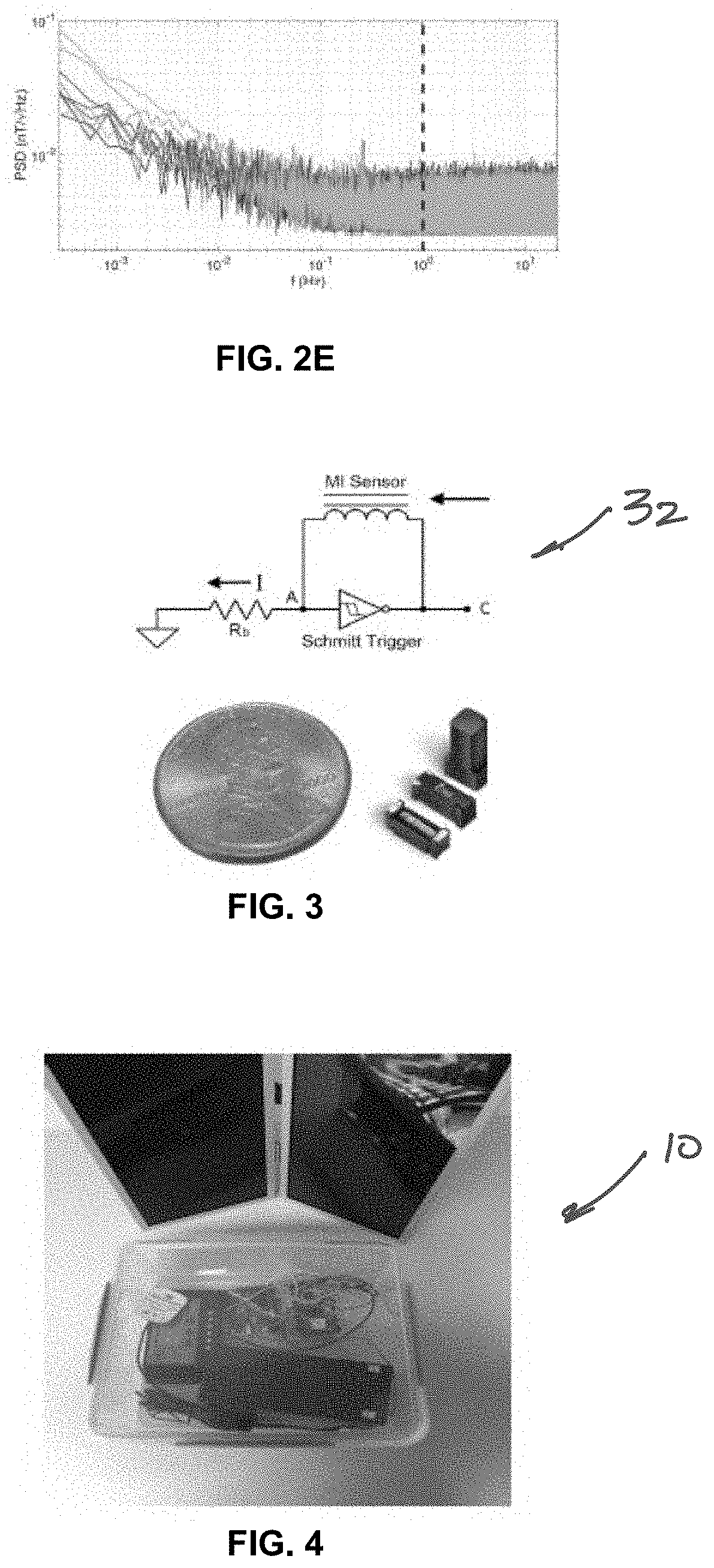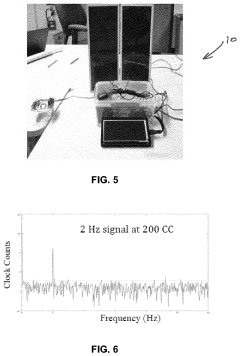Schumann Resonance Applications in Space Weather Monitoring
JUN 24, 20259 MIN READ
Generate Your Research Report Instantly with AI Agent
Patsnap Eureka helps you evaluate technical feasibility & market potential.
Schumann Resonance Background and Objectives
Schumann resonances, discovered by physicist Winfried Otto Schumann in 1952, are a set of spectrum peaks in the extremely low frequency (ELF) portion of the Earth's electromagnetic field spectrum. These resonances occur between the Earth's surface and the ionosphere, creating a natural cavity resonator. The fundamental frequency of Schumann resonances is approximately 7.83 Hz, with harmonics at higher frequencies.
The study of Schumann resonances has evolved significantly over the past seven decades, from a purely theoretical concept to a practical tool for monitoring global lightning activity and investigating various geophysical phenomena. In recent years, there has been growing interest in applying Schumann resonance measurements to space weather monitoring, recognizing their potential to provide valuable insights into the complex interactions between the Earth's atmosphere, ionosphere, and magnetosphere.
The primary objective of utilizing Schumann resonances in space weather monitoring is to develop a more comprehensive understanding of the Earth's electromagnetic environment and its response to solar and cosmic influences. By analyzing variations in Schumann resonance parameters, such as frequency, amplitude, and phase, researchers aim to detect and characterize disturbances in the upper atmosphere and ionosphere caused by solar activity, geomagnetic storms, and other space weather events.
One of the key advantages of Schumann resonance-based monitoring is its global nature. Unlike localized measurements, Schumann resonances provide information about the entire Earth-ionosphere cavity, offering a unique perspective on large-scale atmospheric and ionospheric processes. This global view is particularly valuable for studying the propagation of space weather effects across different regions of the Earth.
Furthermore, Schumann resonance measurements can potentially serve as an early warning system for space weather events. Changes in resonance characteristics may precede visible effects on Earth's surface, allowing for improved prediction and mitigation of space weather impacts on technological systems and human activities.
As technology advances, the integration of Schumann resonance monitoring with existing space weather observation networks is becoming increasingly feasible. This integration aims to enhance our ability to forecast and respond to space weather phenomena, ultimately contributing to the protection of critical infrastructure and the advancement of our understanding of Earth-space interactions.
The study of Schumann resonances has evolved significantly over the past seven decades, from a purely theoretical concept to a practical tool for monitoring global lightning activity and investigating various geophysical phenomena. In recent years, there has been growing interest in applying Schumann resonance measurements to space weather monitoring, recognizing their potential to provide valuable insights into the complex interactions between the Earth's atmosphere, ionosphere, and magnetosphere.
The primary objective of utilizing Schumann resonances in space weather monitoring is to develop a more comprehensive understanding of the Earth's electromagnetic environment and its response to solar and cosmic influences. By analyzing variations in Schumann resonance parameters, such as frequency, amplitude, and phase, researchers aim to detect and characterize disturbances in the upper atmosphere and ionosphere caused by solar activity, geomagnetic storms, and other space weather events.
One of the key advantages of Schumann resonance-based monitoring is its global nature. Unlike localized measurements, Schumann resonances provide information about the entire Earth-ionosphere cavity, offering a unique perspective on large-scale atmospheric and ionospheric processes. This global view is particularly valuable for studying the propagation of space weather effects across different regions of the Earth.
Furthermore, Schumann resonance measurements can potentially serve as an early warning system for space weather events. Changes in resonance characteristics may precede visible effects on Earth's surface, allowing for improved prediction and mitigation of space weather impacts on technological systems and human activities.
As technology advances, the integration of Schumann resonance monitoring with existing space weather observation networks is becoming increasingly feasible. This integration aims to enhance our ability to forecast and respond to space weather phenomena, ultimately contributing to the protection of critical infrastructure and the advancement of our understanding of Earth-space interactions.
Space Weather Monitoring Market Analysis
The space weather monitoring market has been experiencing significant growth in recent years, driven by the increasing reliance on satellite-based technologies and the growing awareness of space weather impacts on critical infrastructure. The global market for space weather monitoring and forecasting services is projected to expand at a compound annual growth rate of 8.5% from 2021 to 2026, reaching a value of $2.3 billion by the end of the forecast period.
The demand for space weather monitoring services is primarily fueled by the aerospace and defense sectors, which account for approximately 40% of the market share. These industries require accurate space weather forecasts to protect satellites, spacecraft, and astronauts from potentially harmful solar events. The telecommunications and energy sectors are also significant contributors to market growth, as they seek to safeguard their infrastructure from geomagnetic disturbances caused by space weather phenomena.
Geographically, North America dominates the space weather monitoring market, holding a market share of around 45%. This is largely due to the presence of major space agencies like NASA and NOAA, as well as numerous private companies specializing in space weather services. Europe follows closely, with a market share of approximately 30%, driven by the European Space Agency's space weather initiatives and the region's strong satellite industry.
The Asia-Pacific region is expected to witness the fastest growth in the coming years, with a projected CAGR of 10.2% from 2021 to 2026. This growth is attributed to increasing investments in space programs by countries like China, India, and Japan, as well as the rapid expansion of satellite-based services in the region.
The integration of Schumann Resonance measurements into space weather monitoring systems represents a promising niche within the broader market. While currently a small segment, it is anticipated to grow rapidly as the technology matures and its benefits become more widely recognized. Early adopters of Schumann Resonance-based monitoring techniques are likely to gain a competitive edge in the market, particularly in providing more accurate long-term space weather forecasts.
Key market players in the space weather monitoring sector include government agencies like NASA, NOAA, and ESA, as well as private companies such as Space Environment Technologies, Space Weather Prediction Center, and Atmospheric and Environmental Research. These organizations are increasingly exploring the potential of Schumann Resonance applications to enhance their space weather monitoring capabilities and expand their service offerings.
The demand for space weather monitoring services is primarily fueled by the aerospace and defense sectors, which account for approximately 40% of the market share. These industries require accurate space weather forecasts to protect satellites, spacecraft, and astronauts from potentially harmful solar events. The telecommunications and energy sectors are also significant contributors to market growth, as they seek to safeguard their infrastructure from geomagnetic disturbances caused by space weather phenomena.
Geographically, North America dominates the space weather monitoring market, holding a market share of around 45%. This is largely due to the presence of major space agencies like NASA and NOAA, as well as numerous private companies specializing in space weather services. Europe follows closely, with a market share of approximately 30%, driven by the European Space Agency's space weather initiatives and the region's strong satellite industry.
The Asia-Pacific region is expected to witness the fastest growth in the coming years, with a projected CAGR of 10.2% from 2021 to 2026. This growth is attributed to increasing investments in space programs by countries like China, India, and Japan, as well as the rapid expansion of satellite-based services in the region.
The integration of Schumann Resonance measurements into space weather monitoring systems represents a promising niche within the broader market. While currently a small segment, it is anticipated to grow rapidly as the technology matures and its benefits become more widely recognized. Early adopters of Schumann Resonance-based monitoring techniques are likely to gain a competitive edge in the market, particularly in providing more accurate long-term space weather forecasts.
Key market players in the space weather monitoring sector include government agencies like NASA, NOAA, and ESA, as well as private companies such as Space Environment Technologies, Space Weather Prediction Center, and Atmospheric and Environmental Research. These organizations are increasingly exploring the potential of Schumann Resonance applications to enhance their space weather monitoring capabilities and expand their service offerings.
Current SR Technology and Challenges
Schumann Resonance (SR) technology has made significant strides in space weather monitoring, yet it faces several challenges in its current state. The global network of SR monitoring stations has expanded, providing more comprehensive data on Earth's electromagnetic environment. These stations utilize sophisticated magnetometers and electric field sensors to detect and analyze the subtle variations in the Earth-ionosphere cavity resonances.
One of the primary advancements in SR technology is the development of high-sensitivity instruments capable of detecting extremely low-frequency (ELF) signals with improved signal-to-noise ratios. These instruments have enhanced our ability to discern subtle changes in SR parameters, which are crucial for space weather monitoring. Additionally, advanced signal processing algorithms have been implemented to filter out anthropogenic noise and isolate the SR signals more effectively.
Despite these improvements, SR technology still faces significant challenges. One major issue is the interference from human-made electromagnetic sources, which can mask or distort the natural SR signals. This is particularly problematic in densely populated areas, necessitating the establishment of monitoring stations in remote locations. However, maintaining and operating these remote stations presents logistical and cost challenges.
Another technical hurdle is the need for real-time data processing and analysis. While SR measurements provide valuable information about global lightning activity and ionospheric perturbations, translating this data into actionable space weather forecasts requires complex modeling and interpretation. Current systems often struggle with the rapid processing of vast amounts of SR data, limiting their effectiveness in providing timely space weather alerts.
The geographical distribution of SR monitoring stations also presents a challenge. While efforts have been made to establish a global network, there are still significant gaps in coverage, particularly over oceanic regions. This uneven distribution can lead to biases in global SR measurements and limit the accuracy of space weather predictions based on SR data.
Furthermore, the integration of SR data with other space weather monitoring technologies remains a complex task. While SR measurements offer unique insights into the Earth's electromagnetic environment, correlating these observations with data from satellite-based instruments and ground-based ionosondes requires sophisticated data fusion techniques that are still being developed.
Lastly, the long-term stability and calibration of SR monitoring instruments pose ongoing challenges. Environmental factors and equipment degradation can affect the accuracy of measurements over time, necessitating regular maintenance and recalibration. Developing more robust and self-calibrating instruments is an area of active research in the field of SR technology for space weather monitoring.
One of the primary advancements in SR technology is the development of high-sensitivity instruments capable of detecting extremely low-frequency (ELF) signals with improved signal-to-noise ratios. These instruments have enhanced our ability to discern subtle changes in SR parameters, which are crucial for space weather monitoring. Additionally, advanced signal processing algorithms have been implemented to filter out anthropogenic noise and isolate the SR signals more effectively.
Despite these improvements, SR technology still faces significant challenges. One major issue is the interference from human-made electromagnetic sources, which can mask or distort the natural SR signals. This is particularly problematic in densely populated areas, necessitating the establishment of monitoring stations in remote locations. However, maintaining and operating these remote stations presents logistical and cost challenges.
Another technical hurdle is the need for real-time data processing and analysis. While SR measurements provide valuable information about global lightning activity and ionospheric perturbations, translating this data into actionable space weather forecasts requires complex modeling and interpretation. Current systems often struggle with the rapid processing of vast amounts of SR data, limiting their effectiveness in providing timely space weather alerts.
The geographical distribution of SR monitoring stations also presents a challenge. While efforts have been made to establish a global network, there are still significant gaps in coverage, particularly over oceanic regions. This uneven distribution can lead to biases in global SR measurements and limit the accuracy of space weather predictions based on SR data.
Furthermore, the integration of SR data with other space weather monitoring technologies remains a complex task. While SR measurements offer unique insights into the Earth's electromagnetic environment, correlating these observations with data from satellite-based instruments and ground-based ionosondes requires sophisticated data fusion techniques that are still being developed.
Lastly, the long-term stability and calibration of SR monitoring instruments pose ongoing challenges. Environmental factors and equipment degradation can affect the accuracy of measurements over time, necessitating regular maintenance and recalibration. Developing more robust and self-calibrating instruments is an area of active research in the field of SR technology for space weather monitoring.
Existing SR-based Space Weather Solutions
01 Schumann Resonance-based therapeutic devices
Various therapeutic devices have been developed that utilize Schumann Resonance frequencies for health and wellness purposes. These devices aim to simulate the natural electromagnetic frequencies of the Earth to promote relaxation, improve sleep quality, and enhance overall well-being. Some designs incorporate wearable technology or portable units that can generate Schumann Resonance frequencies for personal use.- Schumann resonance devices for health and wellness: Various devices are designed to generate or utilize Schumann resonance frequencies for potential health benefits. These devices aim to simulate the natural electromagnetic frequencies of the Earth to promote relaxation, improve sleep quality, and enhance overall well-being. Some implementations include wearable devices, room-based generators, and portable units that can be used in different settings.
- Schumann resonance in environmental monitoring and research: Schumann resonance is utilized in environmental monitoring and research applications. Devices and systems are developed to measure and analyze these resonances for studying global climate patterns, lightning activity, and ionospheric conditions. These technologies can provide valuable data for atmospheric science, geophysics, and climate change research.
- Integration of Schumann resonance in meditation and relaxation products: Schumann resonance frequencies are incorporated into various meditation and relaxation products. These include specialized audio systems, meditation cushions, and relaxation pods that generate or amplify these frequencies. The aim is to create an environment that resonates with the Earth's natural frequencies, potentially enhancing meditation practices and promoting deeper relaxation states.
- Schumann resonance in electromagnetic shielding and protection: Technologies are developed to incorporate Schumann resonance principles in electromagnetic shielding and protection devices. These innovations aim to protect individuals from harmful electromagnetic frequencies while maintaining exposure to beneficial Earth frequencies. Applications include protective clothing, shielding materials for electronic devices, and room-scale protection systems.
- Schumann resonance applications in agriculture and plant growth: Schumann resonance technologies are applied in agricultural settings to potentially enhance plant growth and crop yields. Devices and systems are designed to generate or amplify these frequencies in greenhouses, indoor farming environments, and open fields. The hypothesis is that exposure to these natural Earth frequencies may positively influence plant development and overall agricultural productivity.
02 Schumann Resonance in environmental monitoring
Schumann Resonance has applications in environmental monitoring and geophysical research. Devices and systems have been developed to measure and analyze Schumann Resonance frequencies to study atmospheric phenomena, climate changes, and potential earthquake precursors. These technologies can provide valuable data for scientific research and early warning systems.Expand Specific Solutions03 Integration of Schumann Resonance in wellness products
Schumann Resonance technology has been incorporated into various wellness products such as mattresses, pillows, and personal care items. These products are designed to expose users to beneficial electromagnetic frequencies during rest or daily activities, potentially improving sleep quality and overall health. Some designs focus on creating a localized Schumann Resonance field around the user.Expand Specific Solutions04 Schumann Resonance generators for agricultural applications
Schumann Resonance generators have been developed for agricultural applications, aiming to improve plant growth and crop yields. These devices are designed to create electromagnetic fields that mimic natural Earth frequencies, potentially enhancing soil health, plant vitality, and resistance to pests and diseases. Some systems combine Schumann Resonance with other beneficial frequencies for optimal results.Expand Specific Solutions05 Schumann Resonance in electromagnetic shielding
Technologies have been developed to incorporate Schumann Resonance frequencies into electromagnetic shielding solutions. These innovations aim to protect users from harmful electromagnetic radiation while still allowing exposure to beneficial Earth frequencies. Applications include protective clothing, building materials, and electronic device cases that can filter out harmful EMF while maintaining a connection to natural Schumann Resonance.Expand Specific Solutions
Key Players in SR Monitoring
The field of Schumann Resonance applications in space weather monitoring is in a growth phase, with increasing market size and technological advancements. The global space weather monitoring market is expanding due to the rising importance of understanding and predicting space weather phenomena. Technologically, the field is progressing from experimental to more mature applications. Key players like Nanjing University of Information Science & Technology, California Institute of Technology, and The Boeing Co. are driving innovation. Universities such as Beihang University and Peking University are contributing significant research. Companies like ViaSat, Inc. and Raytheon Co. are developing practical applications, while government agencies like the National Satellite Meteorological Center are integrating these technologies into their monitoring systems. The collaboration between academic institutions and industry leaders is accelerating the development and implementation of Schumann Resonance-based space weather monitoring solutions.
California Institute of Technology
Technical Solution: Caltech has developed advanced Schumann Resonance (SR) detection systems for space weather monitoring. Their approach combines high-sensitivity magnetometers with sophisticated signal processing algorithms to extract SR signals from background noise. The system utilizes a network of ground-based stations to measure global SR variations, which are then correlated with solar activity and ionospheric disturbances. Caltech's method also incorporates machine learning techniques to improve the accuracy of space weather predictions based on SR data.
Strengths: High precision measurements, advanced signal processing, and integration of machine learning. Weaknesses: Reliance on ground-based stations may limit global coverage, and the system may be sensitive to local electromagnetic interference.
The Boeing Co.
Technical Solution: Boeing has developed a satellite-based Schumann Resonance detection system for space weather monitoring. Their approach utilizes a constellation of low Earth orbit satellites equipped with highly sensitive electromagnetic sensors. The system employs advanced signal processing techniques to isolate SR signals from satellite-generated noise and other electromagnetic interference. Boeing's method also incorporates AI-driven predictive models that use SR data to forecast potential impacts on satellite operations and communication systems.
Strengths: Global coverage through satellite constellation, AI-enhanced predictive capabilities. Weaknesses: High cost of satellite deployment and maintenance, potential vulnerability to space debris or solar events affecting the satellites.
Innovative SR Detection Methods
Space weather monitor system
PatentActiveUS11921171B2
Innovation
- A low-cost, low-power, self-contained Space Weather Monitor system incorporating PNI™ Induction magnetometers, GPS, and a Plug-and-Play Power and Communication Observatory (3PCO) System, which enables dense arrays of magnetometers to be deployed easily, reducing deployment complexity and cost, and allowing for wider distribution among universities, K12 schools, and citizen scientists.
Space Weather Monitor System
PatentActiveUS20220365148A1
Innovation
- A low-cost, low-power, self-contained Space Weather Monitor system that integrates magnetometers, GPS, and other sensors with a Plug-and-Play Power and Communication Observatory (3PCO) System, utilizing PNI™ Induction magnetometers and Raspberry Pi controllers, to enable dense arrays of magnetometers for improved data collection and deployment efficiency.
Global SR Monitoring Network Development
The development of a Global Schumann Resonance (SR) Monitoring Network represents a significant advancement in space weather monitoring capabilities. This network aims to establish a comprehensive, worldwide system of SR monitoring stations to enhance our understanding of the Earth's electromagnetic environment and its interactions with space weather phenomena.
The network's primary objective is to create a standardized, interconnected array of SR monitoring stations strategically positioned across the globe. These stations will continuously measure and record SR signals, providing real-time data on the Earth's electromagnetic resonances. By distributing stations across various geographical locations, the network can capture a more complete picture of global SR activity and its variations.
One of the key challenges in developing this network is the selection of optimal site locations. Factors such as electromagnetic noise levels, accessibility, and geographical distribution must be carefully considered to ensure high-quality data collection. Remote areas with minimal human-induced electromagnetic interference are particularly valuable for SR monitoring.
The network's infrastructure will consist of highly sensitive electromagnetic sensors, data acquisition systems, and communication equipment. These components must be designed to operate reliably in diverse environmental conditions and withstand potential disruptions from severe weather or geomagnetic disturbances. Standardization of equipment and data formats across all stations is crucial for ensuring data compatibility and facilitating seamless integration of measurements from different sites.
Data management and analysis form another critical aspect of the network's development. A centralized data repository and processing center will be established to collect, store, and analyze the vast amounts of SR data generated by the network. Advanced algorithms and machine learning techniques will be employed to process this data, identify patterns, and extract meaningful insights related to space weather events.
The Global SR Monitoring Network will also incorporate real-time data sharing capabilities, allowing researchers and space weather forecasters worldwide to access up-to-date SR measurements. This feature will significantly enhance the global community's ability to detect and respond to space weather events promptly.
As the network expands, collaboration between international scientific institutions, space agencies, and governmental organizations will be essential. This cooperation will not only facilitate the sharing of resources and expertise but also ensure the network's long-term sustainability and continued development.
The network's primary objective is to create a standardized, interconnected array of SR monitoring stations strategically positioned across the globe. These stations will continuously measure and record SR signals, providing real-time data on the Earth's electromagnetic resonances. By distributing stations across various geographical locations, the network can capture a more complete picture of global SR activity and its variations.
One of the key challenges in developing this network is the selection of optimal site locations. Factors such as electromagnetic noise levels, accessibility, and geographical distribution must be carefully considered to ensure high-quality data collection. Remote areas with minimal human-induced electromagnetic interference are particularly valuable for SR monitoring.
The network's infrastructure will consist of highly sensitive electromagnetic sensors, data acquisition systems, and communication equipment. These components must be designed to operate reliably in diverse environmental conditions and withstand potential disruptions from severe weather or geomagnetic disturbances. Standardization of equipment and data formats across all stations is crucial for ensuring data compatibility and facilitating seamless integration of measurements from different sites.
Data management and analysis form another critical aspect of the network's development. A centralized data repository and processing center will be established to collect, store, and analyze the vast amounts of SR data generated by the network. Advanced algorithms and machine learning techniques will be employed to process this data, identify patterns, and extract meaningful insights related to space weather events.
The Global SR Monitoring Network will also incorporate real-time data sharing capabilities, allowing researchers and space weather forecasters worldwide to access up-to-date SR measurements. This feature will significantly enhance the global community's ability to detect and respond to space weather events promptly.
As the network expands, collaboration between international scientific institutions, space agencies, and governmental organizations will be essential. This cooperation will not only facilitate the sharing of resources and expertise but also ensure the network's long-term sustainability and continued development.
SR Data Integration with Space Weather Models
The integration of Schumann Resonance (SR) data with space weather models represents a significant advancement in our understanding and prediction of space weather phenomena. This integration process involves combining the low-frequency electromagnetic signals detected in the Earth-ionosphere cavity with existing space weather models to enhance their accuracy and predictive capabilities.
SR data provides valuable information about the global electromagnetic environment, which is influenced by various space weather events. By incorporating SR measurements into space weather models, researchers can gain insights into the ionospheric and magnetospheric conditions that are not easily obtainable through other means. This integration allows for a more comprehensive analysis of the Earth's electromagnetic environment and its response to solar activity.
One of the key aspects of SR data integration is the development of algorithms that can effectively process and interpret the SR signals in the context of space weather models. These algorithms must account for the complex nature of SR measurements, including variations in frequency, amplitude, and phase, and correlate them with other space weather parameters such as solar wind speed, geomagnetic indices, and ionospheric electron density.
The integration process also involves the creation of data assimilation techniques that can incorporate real-time SR measurements into existing space weather prediction models. This real-time integration enables more accurate forecasting of space weather events and their potential impacts on technological systems and human activities. By continuously updating the models with SR data, researchers can improve the temporal and spatial resolution of space weather predictions.
Furthermore, the integration of SR data with space weather models facilitates the development of new analytical tools and visualization techniques. These tools allow scientists to better understand the complex relationships between SR phenomena and various space weather parameters. By visualizing the integrated data, researchers can identify patterns and correlations that may not be apparent when analyzing SR data or space weather models separately.
The successful integration of SR data with space weather models has significant implications for various applications, including satellite operations, communication systems, and power grid management. By improving the accuracy and reliability of space weather predictions, this integration enables better preparedness and mitigation strategies for potential space weather-related disruptions.
SR data provides valuable information about the global electromagnetic environment, which is influenced by various space weather events. By incorporating SR measurements into space weather models, researchers can gain insights into the ionospheric and magnetospheric conditions that are not easily obtainable through other means. This integration allows for a more comprehensive analysis of the Earth's electromagnetic environment and its response to solar activity.
One of the key aspects of SR data integration is the development of algorithms that can effectively process and interpret the SR signals in the context of space weather models. These algorithms must account for the complex nature of SR measurements, including variations in frequency, amplitude, and phase, and correlate them with other space weather parameters such as solar wind speed, geomagnetic indices, and ionospheric electron density.
The integration process also involves the creation of data assimilation techniques that can incorporate real-time SR measurements into existing space weather prediction models. This real-time integration enables more accurate forecasting of space weather events and their potential impacts on technological systems and human activities. By continuously updating the models with SR data, researchers can improve the temporal and spatial resolution of space weather predictions.
Furthermore, the integration of SR data with space weather models facilitates the development of new analytical tools and visualization techniques. These tools allow scientists to better understand the complex relationships between SR phenomena and various space weather parameters. By visualizing the integrated data, researchers can identify patterns and correlations that may not be apparent when analyzing SR data or space weather models separately.
The successful integration of SR data with space weather models has significant implications for various applications, including satellite operations, communication systems, and power grid management. By improving the accuracy and reliability of space weather predictions, this integration enables better preparedness and mitigation strategies for potential space weather-related disruptions.
Unlock deeper insights with Patsnap Eureka Quick Research — get a full tech report to explore trends and direct your research. Try now!
Generate Your Research Report Instantly with AI Agent
Supercharge your innovation with Patsnap Eureka AI Agent Platform!
